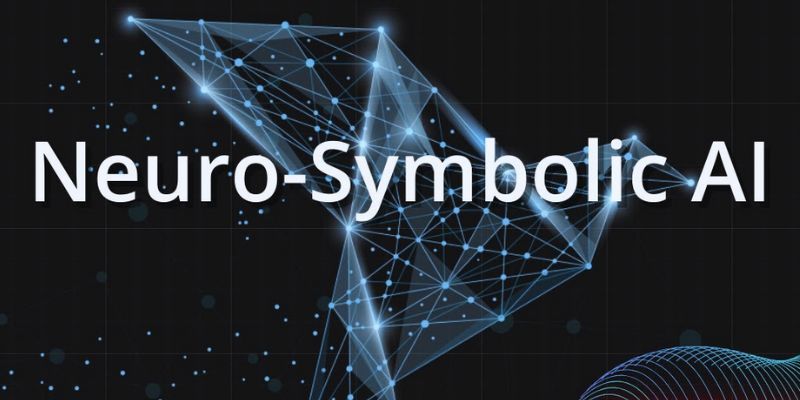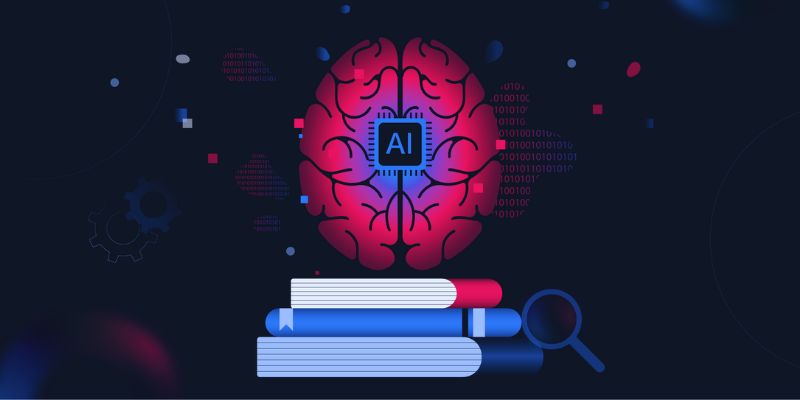Neural-symbolic AI is a new type of artificial intelligence. It combines learning from data and logic, while traditional AI systems usually focus on one of these. For example, machine learning is good at spotting patterns in big data, while symbolic AI is better at reasoning and using rules. Neuro-symbolic AI is smarter, faster, and more accurate than both because it combines both technologies.
Neuro-symbolic AI can learn and think like a human and is great for solving harder problems. It is used in many areas, such as healthcare, robotics, and more. In this article, we will discuss neuro-symbolic AI. You will understand why we need it, its goals, and more. So, let’s get into the details!

What is Neuro-Symbolic AI: An Understanding
Neuro-symbolic AI combines two types of thinking: neural AI and symbolic reasoning. Neural AI is inspired by how the human brain works. It finds patterns in large amounts of data and is good at things like analyzing traffic data in smart cities. However, it can struggle with problems that are rare, new, or based on deeper meanings, like guessing the next big music trend.
That's where symbolic reasoning helps. It uses rules, logic, and context to understand cultural trends, population changes, or world events. Neurosymbolic reasoning uses data to learn patterns and logic to make smart decisions. For example, it will analyze how music tastes change over time and combine that with insights about social changes or global events. It helps AI make better predictions, which makes it more accurate and reliable in difficult situations.
What is the Need for Neuro-Symbolic AI?
Humans use symbols and logic to think and communicate, which helps us understand the world. Early AI tried to copy this by using rule-based systems. However, in a rule-based system, everything had to be programmed manually. But this became expensive and less accurate as more rules were added. Later, neural networks became popular because they could learn patterns from data without needing all the rules. They were great at recognizing patterns.
However, it is hard to understand and requires huge amounts of data to work well. They also struggled with understanding deep meanings, like causes and relationships. That's why scientists combined both approaches into neuro-symbolic AI. It mixes the learning power of neural networks with the reasoning ability of symbolic AI. It helps machines understand things better. For example, using logic to understand shapes and using learning to spot them in images. Neuro-symbolic AI is smarter and easier to train. It is better at solving complex problems by thinking more like humans.
Goals of Neuro-Symbolic AI
Neuro-symbolic AI is designed to create a smarter kind of artificial intelligence by combining the best parts of machine learning. Here are the main goals of Neuro symbolic AI.
- Solve Harder Problems: It aims to handle more complex challenges that current AI systems struggle with.
- Learn From Less Data: Instead of needing huge amounts of information, it focuses on learning faster and with fewer examples.
- Work Across Many Tasks: It tries to create systems that can be used for different jobs, not just one specific task.
- Think And Explain Clearly: It wants AI to make decisions that humans can easily understand and trust.
- Combine Logic And Learning: The goal is to mix human-like thinking with the ability to learn from data for better results.

Use Cases of Neuro-Symbolic AI
Neuro-symbolic AI is useful in many areas because it combines two strengths. Here are some simple examples of where and how it can be used.
- Smart Knowledge Systems: Neuro-symbolic AI can be used to build systems that understand and work with real-world facts and objects. These systems use logic to make sense of information and make smart decisions, just like humans. For example, they can help understand how different diseases are related or how different laws apply to a case.
- Better Decision Making: This technology helps in areas where important decisions must be made, like finance, healthcare, or self-driving cars. It uses both learned patterns from past data and logical rules to make safe and smart choices.
- Understanding Language: Neuro-symbolic AI improves how machines understand and use human language. It can be used in tools like chatbots, translation apps, or smart assistants. It helps answer questions more accurately, translate sentences more clearly, and even write content by combining language rules.
- Smart Robots: Robots powered by neuro-symbolic AI can think more like humans. They understand what they see and hear through sensors and apply logical thinking to plan their actions. For example, a robot can decide how to organize objects on a shelf by understanding both their shapes and their purpose.
- Planning and Scheduling Tasks: This technology is also great for organizing and planning complex tasks. It can be used in factories, airlines, or delivery services to make better schedules. It understands both the data like weather or traffic and the rules like delivery deadlines to plan efficiently.
Future of Neuro-Symbolic AI
Neuro-symbolic AI is helping us move closer to human-like intelligence. It makes it more effective in solving tough problems that require both smart thinking and understanding. As AI becomes more advanced, people don't just want it to recognize patterns. It can be used to understand why things happen and how to make better decisions. That is where neuro-symbolic AI plays an important role.
In the near future, AI systems will not just copy human behavior. They will be able to understand, explain, and reason, just like people do. It could improve everything from healthcare and education to smart assistants and robots. Neuro-symbolic AI is a major step toward building AI that is more trustworthy and human-like.
Conclusion:
Neuro-symbolic AI is a big step forward in making artificial intelligence smarter and more like human thinking. Combining the power of learning from data with the ability to use logic and rules helps machines understand, reason, and make better decisions. It makes AI more useful, reliable, and easier to trust. It can be used in many areas, such as medicine, robots, and more. As AI continues to grow, neuro-symbolic AI will play an important role in building systems that can learn and think clearly.











